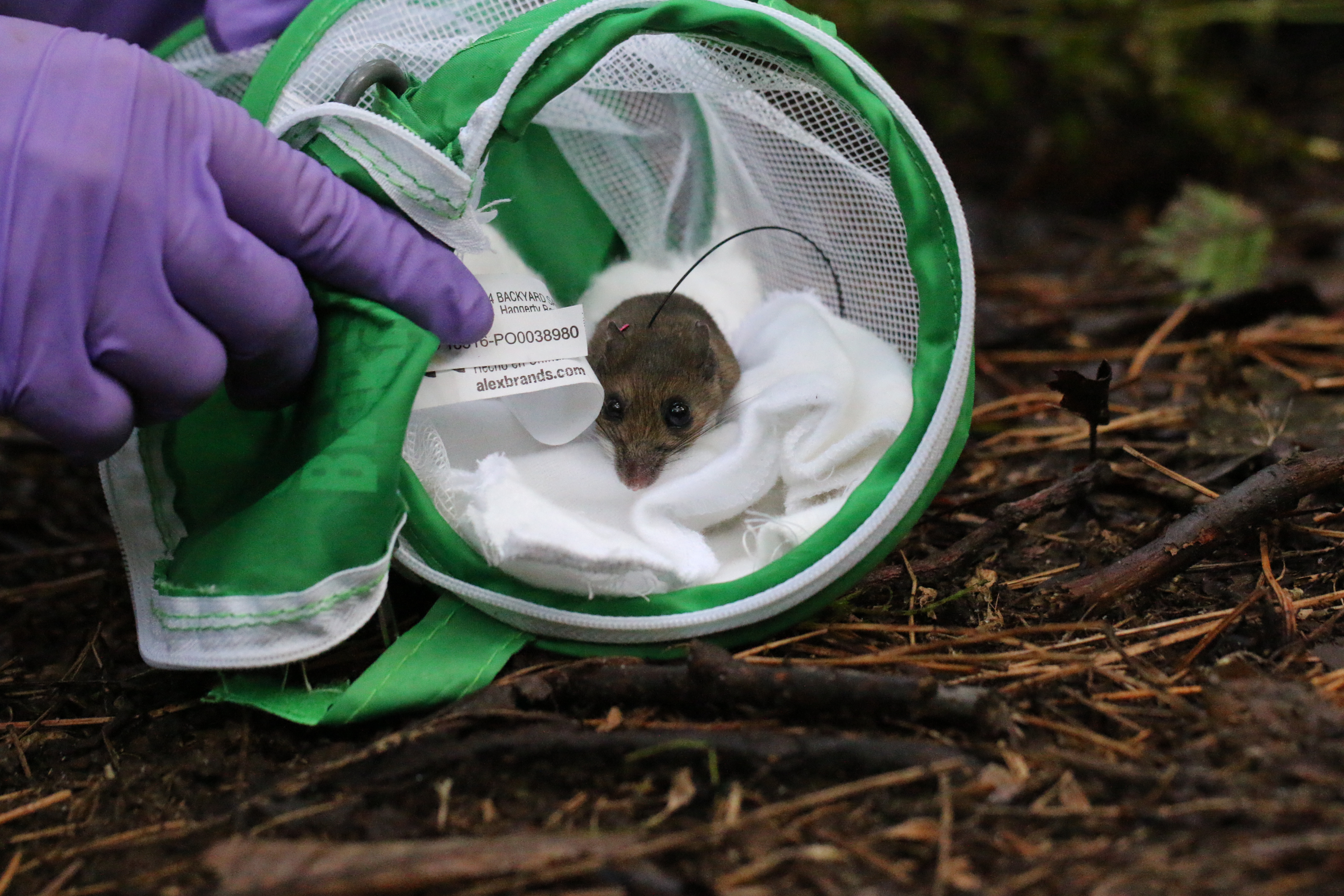Several University of Maryland graduate students are studying the movement patterns of white-footed mice to combat the rise in ticks and Lyme disease in the state this fall.
In partnership with the United States Agriculture Department’s Agricultural Research Service and the Howard County Department of Recreation and Parks, university researchers are working on a five-year pest management study in Howard County.
This fall, researchers will capture and collar 20 mice in four Howard County parks to track their movements and better understand how they contract ticks, said Grace Hummell, a wildlife ecology graduate student working on the project.
Capturing specimens has proven easier than she originally anticipated.
“Mice really love peanut butter, so surprisingly it’s not that hard to catch them,” she said.
In the spring, they will collar another 40 mice in those parks for the treatment portion of the study, which will involve using pesticide to kill the ticks. Bait boxes with a pesticide called fipronil will be placed in areas the mice frequent, Hummell said. This will help researchers determine the threshold at which mice venture into residential areas where ticks make the jump to humans, she added.
“I’m directly looking at mass foraging behavior and movement, so we can see how mice interact in this urban-suburban area, on the park’s line and private homes,” Hummell said. “We’re trying to reduce that threshold between the edge of the parks and the homes.”
The study also includes tick sampling of sites near wooded areas, where ticks are captured with a net and sent to a lab for Lyme disease testing, said Laura Beimfohr, a USDA field coordinator overseeing the project.
[Read more: UMD researchers will study cosmic rays with an International Space Station device]
Nationally, about 25 percent of ticks have the disease, Beimfohr said. However, tick sampling around several elementary schools in Prince George’s County showed up to an 80 percent infection rate in 2016, she added.
“Everybody knows someone who has had Lyme. It’s just really prevalent,” Beimfohr said. “What we’re trying to do is better understand it and better treat it before it becomes an issue.”
The total funding for the study in Howard County is about $250,000, Beimfohr said, adding that it includes funds to study and treat another commonly associated tick-spreading animal — white-tailed deer.
Last winter, researchers trapped about 20 deer using nets and put tracking collars on them, said Patrick Roden-Reynolds, an ecosystem health and natural resource management graduate student who assisted with the project.
The deer’s movements are being tracked right now, and eventually researchers will install “4-poster deer feeders,” Roden-Reynolds said. While eating at these feeders, deer will rub up against posts that have “tickicide” on them, killing any ticks on the deer.
Researchers hope to collar 30 more deer this winter, for a total of 50, Roden-Reynolds said. Examining lives of animals known to carry ticks with Lyme disease is critical to knowing where and how to apply the pesticide before the tick jumps to humans, he said.
[Read more: Urbanization and economic development could curb infectious diseases, UMD study finds]
“It was really only discovered that Lyme existed in the ’80s, so we really don’t know how it spreads and how it moves through an environment. So that’s one part of this project,” Roden-Reynolds said. “The second part of the project is how we can control that, and that’s where the 4-Posters and the bait boxes come in.”
Before trapping deer and mice, the researchers went door-to-door in nearby Howard County neighborhoods to let residents know about their project and that they would be in the area frequently, Roden-Reynolds said.
“It was amazing how often the owners said, ‘Yeah, my husband has Lyme,’ or ‘my neighbor has Lyme,'” Roden-Reynolds said. “It was really surprising how prevalent it was in these communities. The homeowners were happy to hear we were trying to figure something out. Hopefully we can come up with a solution.”



